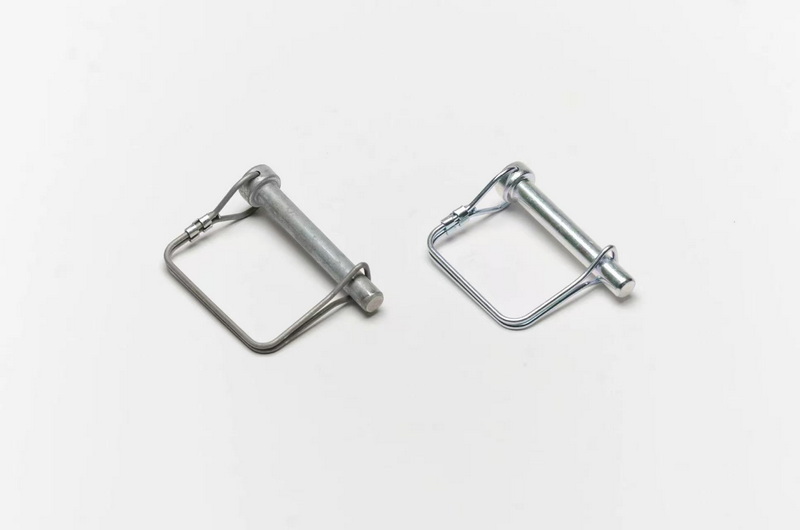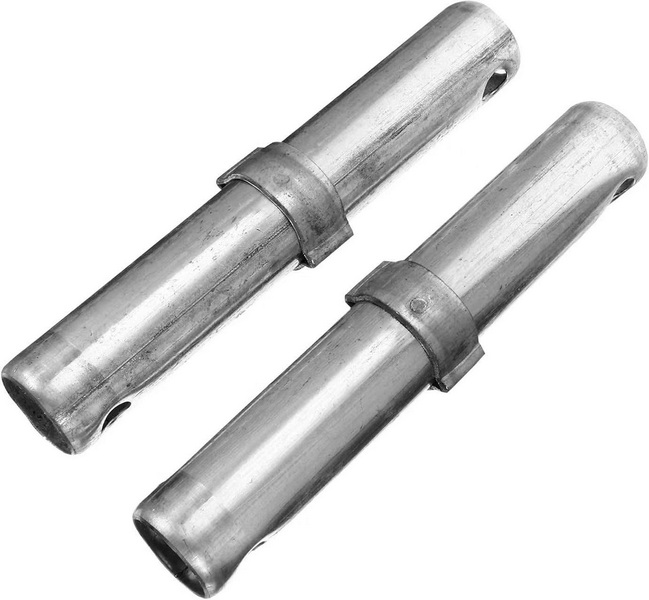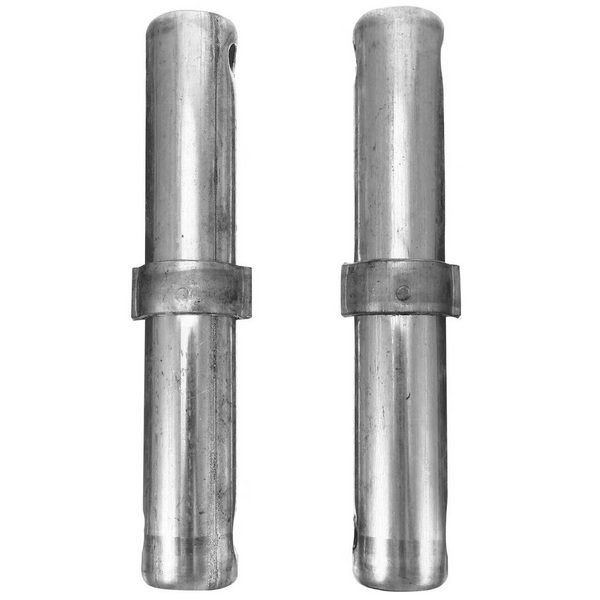Content Menu
● Overview of System Scaffold Knuckle Pins
● Key Features of System Scaffold Knuckle Pins
● Types of System Scaffold Knuckle Pins
● Applications of System Scaffold Knuckle Pins
● Comparison of System Scaffold Knuckle Pins
● Best Practices for Using System Scaffold Knuckle Pins
>> Regular Inspections
>> Proper Installation
>> Training and Competency
● Case Studies
>> Case Study 1: High-Rise Building Construction
>> Case Study 2: Industrial Maintenance Project
>> Case Study 3: Event Staging
● Advanced Technologies in System Scaffold Knuckle Pins
● Future Developments in System Scaffold Knuckle Pins
● Conclusion
● FAQ
>> 1. What are the primary types of system scaffold knuckle pins?
>> 2. How do system scaffold knuckle pins enhance scaffolding stability?
>> 3. What materials are commonly used for system scaffold knuckle pins?
>> 4. Can system scaffold knuckle pins be customized?
>> 5. How often should system scaffold knuckle pins be inspected?
● Citations:
System scaffold knuckle pins are essential components in scaffolding systems, used to connect and secure various parts of the structure. These pins play a crucial role in ensuring the stability and safety of scaffolding, making them a vital part of construction and maintenance projects. In this article, we will explore the different types of system scaffold knuckle pins, their applications, and how they compare in terms of functionality and efficiency.

Overview of System Scaffold Knuckle Pins
System scaffold knuckle pins are designed to provide a secure connection between scaffolding components, such as tubes, couplers, and boards. They are typically made from durable materials like steel or galvanized steel to withstand the rigors of construction environments.
Key Features of System Scaffold Knuckle Pins
- Connection Functionality: These pins are used to connect scaffolding tubes, ensuring a stable framework that can support the weight of workers, tools, and materials.
- Material Durability: Often made from high-quality steel or galvanized steel, these pins offer excellent durability and resistance to corrosion.
- Versatility: System scaffold knuckle pins can be used in various scaffolding systems, including ringlock, cuplock, and kwikstage scaffolding.
Types of System Scaffold Knuckle Pins
There are several types of system scaffold knuckle pins, each designed for specific applications and scaffolding systems:
- Pressed Joint Pins: These pins are commonly used in scaffolding systems due to their simple structure and high load-bearing capacity. They are often made from materials like Q235 or Q355 steel and feature a galvanized surface for corrosion resistance.
- Scaffolding Coupling Pins: These pins are customized according to the inner diameter of scaffold tubes and are used in various scaffolding systems such as ringlock, cuplock, and kwikstage.
- Inner Joint Pins: These pins are used inside scaffold tubes to ensure a secure connection and maintain alignment, providing structural stability and safety.
Applications of System Scaffold Knuckle Pins
System scaffold knuckle pins are versatile and can be applied in various scenarios:
- Construction Projects: Ideal for residential and commercial building projects where scaffolding is used extensively.
- Industrial Maintenance: Useful in industrial settings for repairs and maintenance tasks that require safe access to elevated areas.
- Event Staging: Can be used to create temporary structures for events such as concerts or exhibitions.

Comparison of System Scaffold Knuckle Pins
When comparing different types of system scaffold knuckle pins, consider the following factors:
- Material Strength: Pressed joint pins are often made from stronger materials like Q235 or Q355 steel, offering higher load-bearing capacity.
- Ease of Use: Scaffolding coupling pins are designed for easy installation and removal, making them suitable for projects requiring frequent adjustments.
- Corrosion Resistance: Inner joint pins are typically galvanized, providing excellent corrosion resistance and extending their lifespan.
Best Practices for Using System Scaffold Knuckle Pins
To ensure the effective use of system scaffold knuckle pins, consider implementing these best practices:
Regular Inspections
Conduct regular inspections of scaffolding pins to identify any signs of wear or damage. This ensures that all components remain in good condition and can support the required loads safely.
Proper Installation
Ensure that pins are installed correctly according to the manufacturer's guidelines. Incorrect installation can compromise the stability of the scaffolding structure.
Training and Competency
Train all personnel involved in scaffolding assembly and disassembly to ensure they understand how to properly use and inspect system scaffold knuckle pins.
Case Studies
To illustrate the effectiveness of system scaffold knuckle pins in real-world applications, let's examine a few case studies:
Case Study 1: High-Rise Building Construction
In a recent high-rise building project, contractors faced challenges with ensuring the stability of scaffolding structures. By utilizing pressed joint pins, they were able to create a robust framework that supported heavy loads efficiently. The pins' high load-bearing capacity and durability ensured that the scaffolding remained stable throughout the project, enhancing worker safety and productivity.
Case Study 2: Industrial Maintenance Project
During routine maintenance work in an industrial setting, engineers needed a system to ensure safe access to elevated areas. The use of scaffolding coupling pins allowed for quick assembly and disassembly of scaffolding components, reducing downtime and enhancing project efficiency. The versatility of these pins made them ideal for the complex geometry of the industrial structure.
Case Study 3: Event Staging
In a recent event staging project, contractors needed to create a temporary structure for a concert. By using system scaffold knuckle pins, they were able to assemble the scaffolding quickly and efficiently, ensuring that the structure was stable and safe for the audience. The ease of installation and removal of these pins allowed for rapid setup and teardown, meeting the tight deadlines typical of event staging projects.
Advanced Technologies in System Scaffold Knuckle Pins
Modern system scaffold knuckle pins often incorporate advanced technologies to enhance durability and efficiency:
- Galvanization: The use of hot dip galvanization provides superior corrosion resistance, extending the lifespan of the pins and reducing maintenance needs.
- Customization: Many manufacturers offer customization services, allowing pins to be tailored to specific project requirements, enhancing their performance and safety.
Future Developments in System Scaffold Knuckle Pins
As technology continues to evolve, we can expect further innovations in system scaffold knuckle pins:
- Material Innovations: New materials with enhanced strength-to-weight ratios could lead to lighter yet stronger pins, improving scaffolding efficiency.
- Smart Technologies: Integration of smart sensors into knuckle pins could provide real-time monitoring of scaffolding conditions, enhancing safety and reducing maintenance needs.
Conclusion
System scaffold knuckle pins are critical components in scaffolding systems, providing a secure connection between various parts of the structure. By understanding the different types of these pins and their applications, contractors can optimize scaffolding efficiency and safety. As construction demands continue to evolve, the use of advanced technologies and best practices will remain essential in ensuring the reliability and effectiveness of system scaffold knuckle pins.

FAQ
1. What are the primary types of system scaffold knuckle pins?
The primary types include pressed joint pins, scaffolding coupling pins, and inner joint pins, each designed for specific scaffolding systems.
2. How do system scaffold knuckle pins enhance scaffolding stability?
These pins provide a secure connection between scaffolding components, ensuring a stable framework that can support heavy loads safely.
3. What materials are commonly used for system scaffold knuckle pins?
Common materials include steel and galvanized steel, chosen for their durability and corrosion resistance.
4. Can system scaffold knuckle pins be customized?
Yes, many manufacturers offer customization options to tailor pins to specific project needs, enhancing their performance and safety.
5. How often should system scaffold knuckle pins be inspected?
Regular inspections are crucial to identify any signs of wear or damage, ensuring that all components remain in good condition and can support required loads safely.
Citations:
[1] https://apacsafety.com/scaffold-joint-pin/
[2] https://www.wm-scaffold.com/scaffolding-coupling/
[3] https://www.wm-scaffold.com/scaffolding-coupler.html
[4] https://dss.net/what-are-scaffold-coupling-pins-and-its-uses/
[5] https://www.wm-scaffold.com/scaffolding-system/
[6] https://apacsafety.com/difference-between-cuplock-and-ringlock-scaffolding/
[7] https://pangda.en.made-in-china.com/product/rTJUXQBVHKks/China-Construction-Scaffolding-Scaffold-Connectors-Tube-Clamps-Joints-Knuckles-Pipe-Fittings-Joint-Pin-Coupler.html
[8] https://www.form-scaffs.com/scaffolding-coupler/scaffolding-inner-joint-pins.html






















